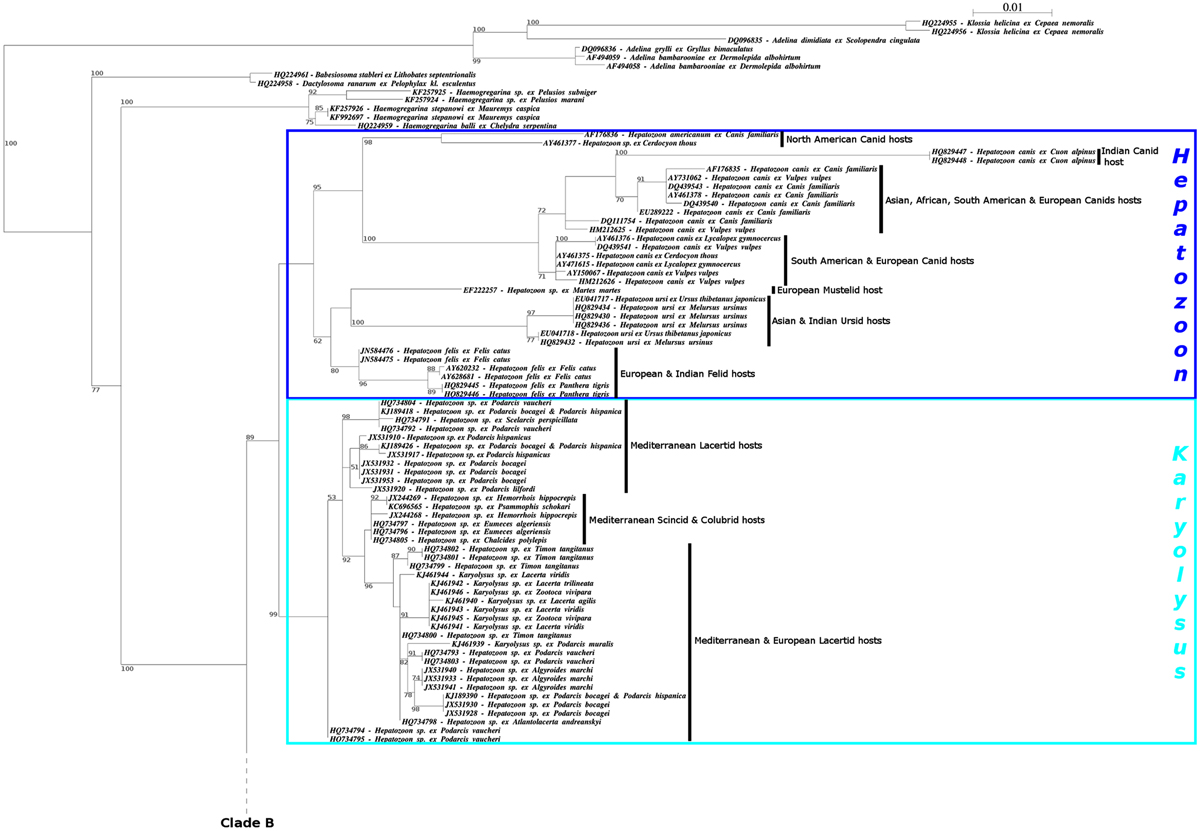Figure 2.


Download original image Download original image
Phylogenetic tree based on the 18S ssrDNA gene of adeleorinid Coccidia illustrating the polyphyly of the genus Hepatozoon and the new proposed classification of the terrestrial Haemogregarines. Analysis, generated by the Maximum Likelihood (ML) method with a GTR + Γ + I model, performed with 180 sequences: 6 monoxenous parasites (4 Adelina and 2 Klossia) as outgroup and 173 heteroxenous parasites (139 Hepatozoon, 18 Hemolivia, 8 Karyolysus, 5 Haemogregarina, 1 Dactylosoma, 1 Babesiosoma, 1 sequence extracted from the host Cerastes cerastes), all downloaded from GenBank, and our new sequence of Hemolivia stellata. The intermediate host is indicated for each sequence. The family of the Vertebrate hosts and the geographical origin are in boldface characters. Coloured boxes indicate the type/genus of the terrestrial haemogregarines: Haemogregarines of Type I – genus Hepatozoon in dark blue; Haemogregarines of Type II – genus Karyolysus in light blue; Haemogregarines of Type III – genus Hemolivia in red; Haemogregarines of Type IV – genus Bartazoon in green. Nodal support is provided by bootstrap values, estimated by 1000 replicates and only shown when > 50%. Hypothesised evolutionary changes can be evaluated with the scale bar.
Current usage metrics show cumulative count of Article Views (full-text article views including HTML views, PDF and ePub downloads, according to the available data) and Abstracts Views on Vision4Press platform.
Data correspond to usage on the plateform after 2015. The current usage metrics is available 48-96 hours after online publication and is updated daily on week days.
Initial download of the metrics may take a while.


